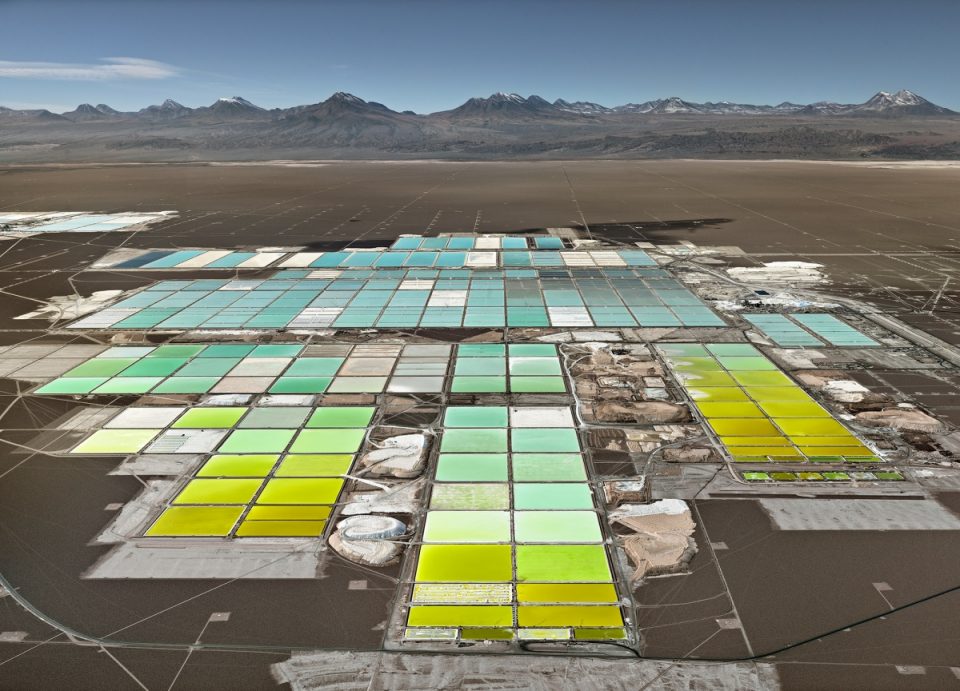Whatever happened to the ‘European Army’? Some of us may still remember the public appeal, issued three years ago by the philosopher, Jürgen Habermas, urging ‘Europe’, as identified with the EU, to arm itself, so as to defend its ‘way of life’ against China, Russia and the Land of Trump, and in the act advance its ‘ever closer union’ in a supranational superstate. Cosignatories were a handful of German political has-beens, including Friedrich Merz, then still of BlackRock. Here, for a change, there is good news: the ‘European Army’ is as dead as any army can be and, unlike perhaps the indefatigable Merz who is currently running for the umptieth time for president of the CDU, beyond resurrection.
What sealed its fate? In various ways, never publicly discussed, as is the neo-German custom when it comes to questions of life and death, the ‘European Army’ project was linked to the longstanding German pledge to NATO to increase its military spending to 2% of GDP, i.e., by roughly one half, by some unspecified date in the transatlantic future. It was and is easy to find out that this would raise German ‘defence’ expenditure above that of Russia, not counting the rest of NATO. It is equally easy to note that German military spending can only be on conventional and not on nuclear arms. In the 1960s, West Germany was one of the first countries to sign the nuclear non-proliferation treaty, as a condition of the Western Allies returning some of its sovereignty. Moreover, it was and is obvious that Russia, with its expensive nuclear force, would be unable to keep up with Germany in a conventional arms race, which would lead it to invest in upgrading its ‘nuclear capabilities’. While this should frighten the bravest of Germans, in fact it does not, as merely mentioning issues of this kind marks you as a Putinversteher (Putin empathizer), and who wants to be that?
What exactly the 2% were to be good for, apart from generally adding to the firepower of ‘the West’, was never explained, although it was clearly related to the idea of turning NATO into a global intervention force. Note that the entire German military, unlike the other member countries, is under the command of NATO, aka the United States. Note also, however, that France, too, wants Germany to work towards the 2%. France itself has for years met that target, the reason being that, just like Russia, it is maintaining an expensive nuclear force, and is therefore lacking in conventional muscle. Seen from France, a German non-nuclear military build-up need not necessarily benefit the US but, under favourable circumstances, could benefit France, as it might compensate for its conventional deficit caused by its nuclear surplus.
It is here that the European army of Habermas and friends comes into play. For the French, what Macron calls ‘European strategic sovereignty’ can be achieved only if Germany can be extracted from its Atlanticist military entanglement, wholly or at least in part, in favour of a European-French entanglement. While this would be difficult enough generally, it would be impossible without new units and ‘capabilities’ designated from the beginning for self-determined European rather than US-determined transatlantic purposes. All it takes, however, to discard this prospect is a look at German budgetary planning for the post-Corona near future (if post-Corona it will be). As passed under Merkel as Chancellor and Scholz as Finance Minister, the current five-year budget forecast envisages a decline in defence spending from 50 billion euros in 2022 to 46 billion in 2025, although no less than 62 billion would be needed for an increase to 1.5% of GDP, far short of the 2% NATO target. During coalition talks, military sources let it be known that they had no hope for a turnaround under a government dominated, in their view, by ‘the left’. According to them, the only way under these conditions for the armed forces to repair their allegedly ‘disastrous condition’, due to decades of neglect under successive Grand Coalition Merkel governments, was by cutting military personnel by 13,000, down from 183,000.
Soldiers, like farmers, always complain. However much money you give them, they feel it should be more. But with the huge deficits run by the German federal budget in 2020 and 2021, and with the determination of the incoming Scholz government, with Lindner at Finance, to hold on to the debt brake, not to mention the giant public investment planned for de-carbonization and the ‘digital transformation’, one can safely assume that the dreams of Habermas and Merz of a ‘European army’ were dreamt in vain, and that its hoped-for dividends for both ‘European integration’ and the arms industry will never materialize. The coalition agreement, interestingly, avoids the 2% issue with almost Merkelian chutzpah: ‘We want Germany in the long run (!) to invest three (!) percent of its gross domestic product in international action, in a networked and inclusive approach (?), thereby strengthening its diplomacy and development policy and fulfilling its NATO commitments.’ Nothing on how this is to be paid for, and nothing there for Macron, up for re-election in the spring of 2022, with which to convince his voters of progress toward ‘European sovereignty’, conceived as an extension of French sovereignty – with France post-Brexit being the EU’s only remaining nuclear power and permanent member of the UN Security Council, and with German tanks nicely complementing French nuclear submarines, hopefully rendering the AUKUS fiasco forgotten.
Is there a prospect for some sort of compensation? Hope, as a German saying has it, dies last, and this may be particularly true for France in matters European. For four years now, Germany and France have been talking about a French-German fighter bomber, the Future Combat Air System (FCAS), to succeed the French Rafale and the German Eurofighter as the two countries’ sixth generation fighter aircraft. Originally FCAS was a French-British project which, however, fell by the wayside in 2017 when the UK chose to go for a plane of its own, the Tempest. Urged by Macron, Merkel agreed to fill the gap. In 2018 Dassault and Airbus Defence signed on as core contractors, and Belgium and Spain were brought in as further project participants. Still, work progressed only slowly, with severe disagreements especially on intellectual property rights, technology transfer and, important for France, arms export policies. Under pressure from Paris, and probably following up on confidential side-agreements in the 2019 Treaty of Aachen, the Merkel government got the Bundestag budget committee in June 2021 to authorize 4.5bn euros as a first tranche, to insure against a possible change in the German parliamentary majority after the September election.
It is no secret that among the German political class, FCAS has few supporters if any. This holds also for the military, who consider it one of those overambitious French grands projets that are doomed to fail due to excessive technological ambition. The system, which officially is to go into operation around 2040, consists not just of a fleet of stealth bombers but also of swarms of unmanned drones that are to accompany the planes on their missions. There are also satellites to support the planes and the drones, and generally to add cyber warfare capabilities to the system, giving it a sci-fi flair that stolid German generals tend to find, at a minimum, frivolous. Recently the German Federal Audit Office, in a confidential report, reprimanded the government for having left open crucial issues in negotiating the agreement, while the Bundeswehr procurement office has expressed doubts over whether the system will ever become operative at all. No doubts over whether FCAS will be expensive. Right now official, or semi-official, estimates are around 100bn euros, while knowledgeable insiders at Airbus believe the bill would be at least three times as high. For comparison, the NGEU Corona recovery fund, to be divided between 27 members states, amounts to 750bn.
Could FCAS be a consolation prize for Macron, to make him forget about the ‘European army’ and ‘European strategic sovereignty’? Perhaps if there was still more money around, but hardly now, after the Great Corona Drain. In Germany FCAS is considered more of an embarrassment than a strategic or industrial opportunity – one of the many problems left by Merkel, with her inimitable skill at making incompatible and unrealizable promises and getting away with it, as long as she was in office. While there are some ‘Gaullists’ left in the German political class for whom the alliance with France – leading, it is hoped, to a French-German/German-French Europe – takes precedence over the alliance with the United States, none of them can be found in the new government.
Indeed, where it might speak of a ‘European army’, the coalition agreement merely foresees ‘increased cooperation between the national armies of EU member states…in particular with respect to training, capabilities, interventions and equipment, as for example already envisaged by Germany and France’. And not to be misunderstood, it adds that ‘in all this, interoperability and complementarity with the command structures and capabilities of NATO must be assured’, declaring even more explicitly a few pages later: ‘We will strengthen the European pillar in NATO and work for more intensive cooperation between NATO and the EU.’ FCAS is not even mentioned, or only indirectly, in language that cannot but hurt French feelings: ‘We are strengthening defence technology cooperation in Europe, especially through high-quality cooperation projects, taking into account national key technologies and enabling small and medium-sized companies to enter the competition. Replacement purchases and systems available on the market are to be prioritized for procurement in order to avoid capability gaps.’ Chances are that the project, if it does not fall apart for technological problems or a tug-of-war over industrial leadership and patent rights, will at some point be abandoned for its costs.
FCAS scepticism is found not just in SPD and FDP. The incoming Foreign Minister, the Green chancellor-candidate-in-vain, Annalena Baerbock, is a faithful Hillary Clinton-type Atlanticist who managed to impose her views on the coalition document throughout. During the coalition talks, the Greens insisted on an early replacement of the Luftwaffe’s aging Tornado fleet with the American F-18 fighter bomber. Not to be confused with the Eurofighter, the Tornados are Germany’s contribution to what NATO calls ‘nuclear participation’ (nukleare Teilhabe). This provides for some European member states, above all Germany, to deliver American nuclear warheads with bombers of their own, with American permission and under American direction. (As far as one knows, the United States or NATO cannot formally command member states to nuke a common enemy, but member states cannot nuke an enemy without American authorization.) For the purpose, the United States maintain an unspecified number of nuclear bombs on European, in particular German soil.
Recently leading figures in the SPD have doubted the wisdom of nuclear participation. The United States for their part have complained about the Tornadoes, first put into service in the 1980s, becoming outdated, demanding more comfortable travel arrangements for their warheads. Currently the few remaining Tornadoes capable of flying – one hears, less than two dozen – stand to lose their (American) license to kill in 2030. Unless one lets the programme wither away, which is what some on the SPD left would prefer, the Tornadoes could in principle be replaced with the French Rafale or the German Eurofighter (both of which are to be replaced, in some nebulous future, by FCAS). It so happens, however, that to be capable of carrying American bombs, non-American planes have to be certified by the United States, which takes time, no less than an impressive eight to ten years. This brings in the F-18, which would be instantly available to inflict nuclear Armageddon on anyone any future POTUS might determine to be deserving of it. It so happens that the F-18 seems to be the favourite of the German military, desperate to preserve their reputation with their American idols and avoid the risks of French technological devilment.
To their relief, speedy procurement of a generously sized fleet of F-18s turned out to be one of the Baerbock Greens’ most unremittingly fought-for demands in the coalition talks. After acrimonious negotiations, they got their way. In the coalition agreement, in language fully comprehensible only to the initiated, the parties announced that they will ‘early in the twentieth legislative period’ – one has to use Google to find out that this is the legislative period now beginning – ‘procure a successor system for the Tornado fighter aircraft’ and ‘accompany the procurement and certification process objectively and conscientiously with a view to Germany’s nuclear participation’. The F-18 being far from cheap for a cash-strapped government, this is more bad news for Macron and his ‘European strategic sovereignty’. While the US won’t get their 2%, at least they get to sell Germany a fair number of F-18s. France, by comparison, is likely to end up empty-handed, getting neither a European army nor, ultimately, FCAS.
Read on: Wolfgang Streeck, ‘Plus Ça Change’, NLR 131.










